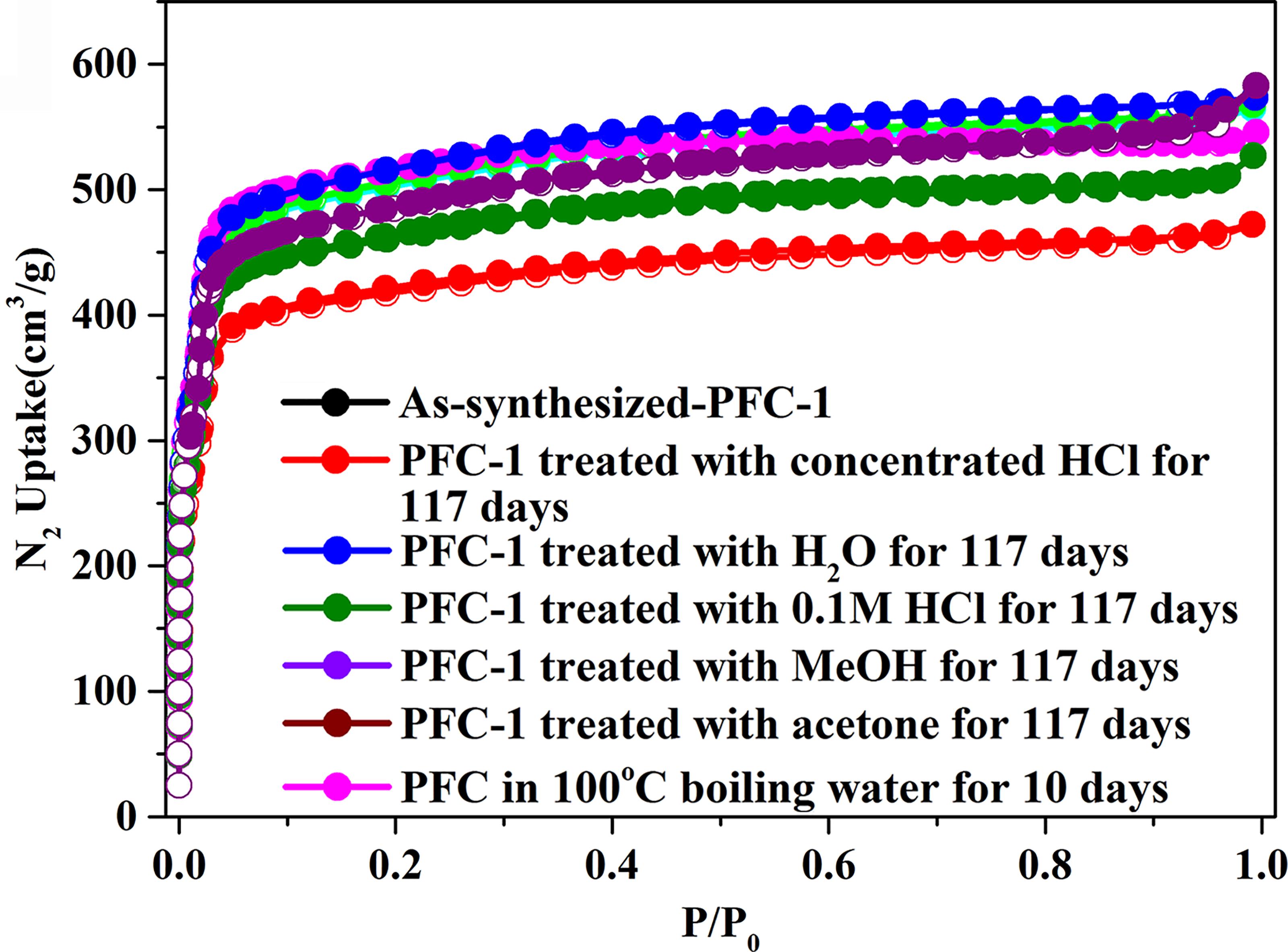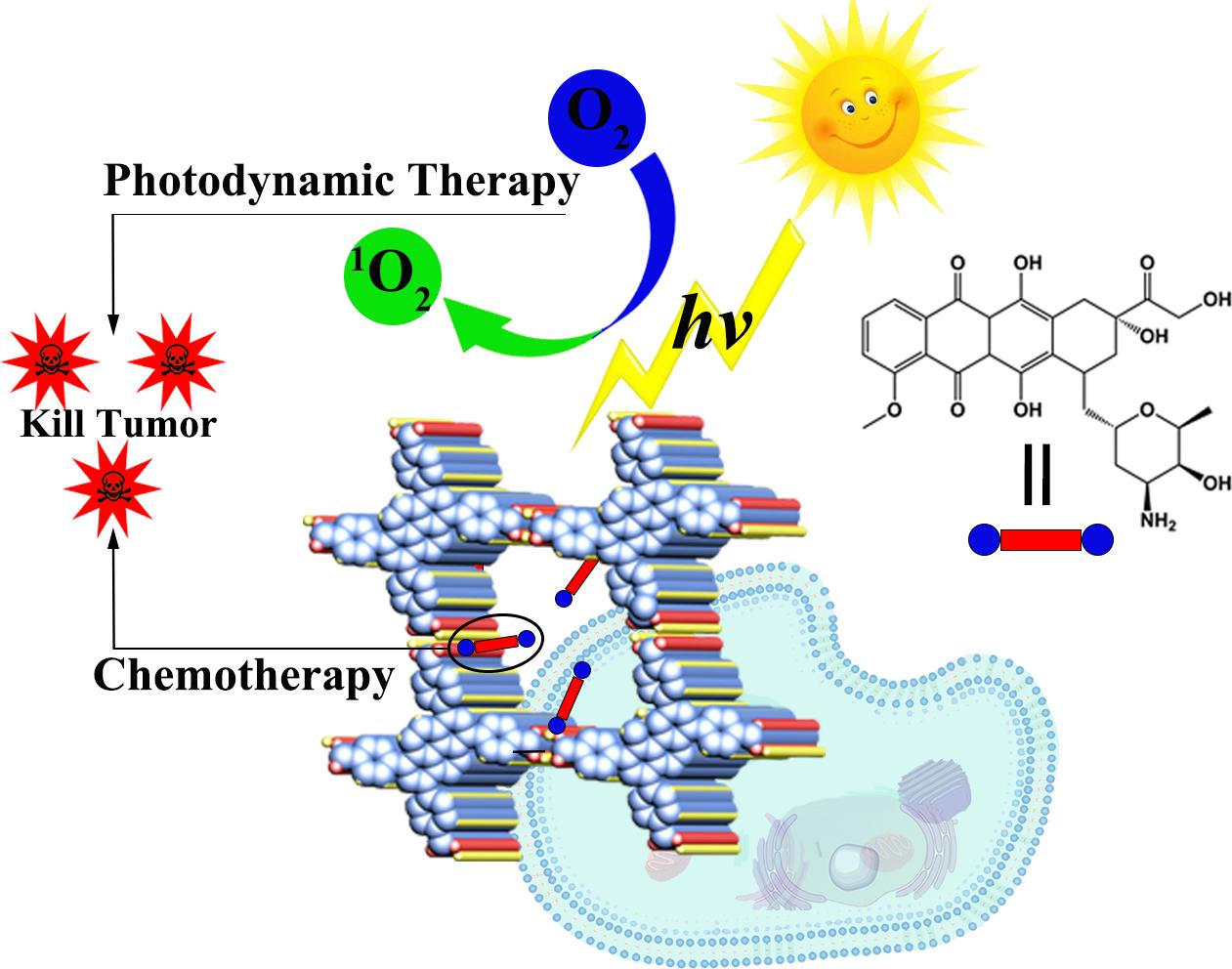The strategies to design stable HOF include creating multiple hydrogen bonds, taking advantage of pai-stacking interactions and avoiding residual hydrogen donors/acceptors after self-assembly.
The resultant HOF exhibits very high surface area of 2,122 m2/g and excellent chemical stability of being intact in concentrated HCl for at least 117 days.
Notably, the thermal damage to PFC-1 can be completely cured simply by a methodology of acid-assistant crystalline redemption.
As a proof of concept, Doxorubicin drug was encapsulated in the ultra-robust and photoactive PFC-1 for synergistic chemo-photodynamic therapy.
The composite material is capable of delivering comparable therapeutic efficacy with commercial Doxorubicin drug but exhibiting considerably lower cytotoxicity due to the non-metal and low-toxic components.
This work demonstrated the notorious stability issue of HOF materials can be properly addressed through the rational structure design strategies, paving a way for developing robust HOFs and offering promising application perspectives.

Figure 1 N2 adsorption isotherms (77 K) of as-synthesized PFC-1 and samples treated with different solutions, which reveal excellent chemical stability. (Image by Prof. CAO et al.)

Figure 2 The schematic representation of chemo-photodynamic therapy of PFC-1. (Image by Prof. CAO et al.)
Contact:
Prof. CAO Rong
Fujian Institute of Research on the Structure of Matter
Chinese Academy of Sciences
Email: rcao@fjirsm.ac.cn
Prof. LIU Tianfu
Fujian Institute of Research on the Structure of Matter
Chinese Academy of Sciences
Email: tfliu@fjirsm.ac.cn